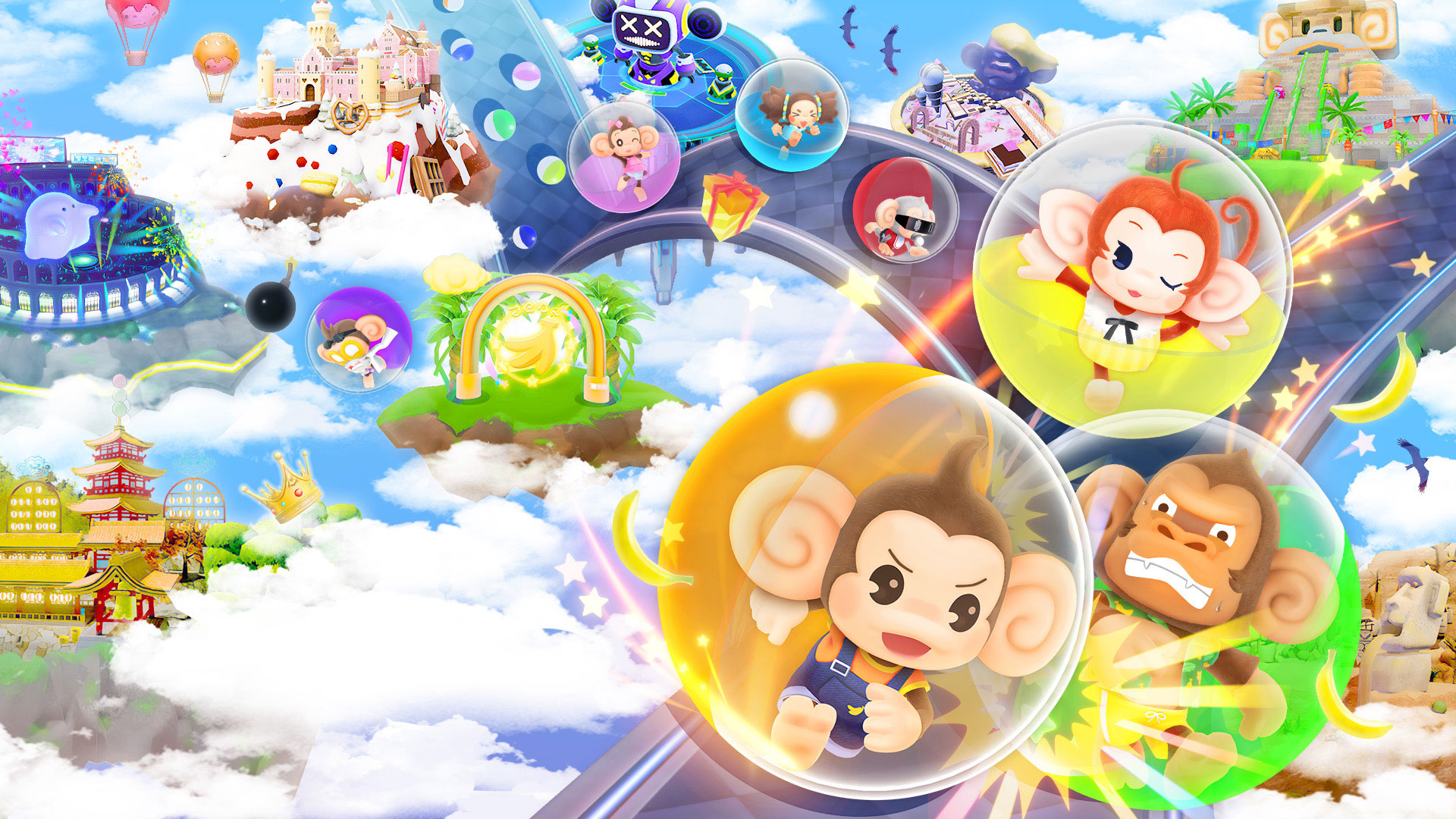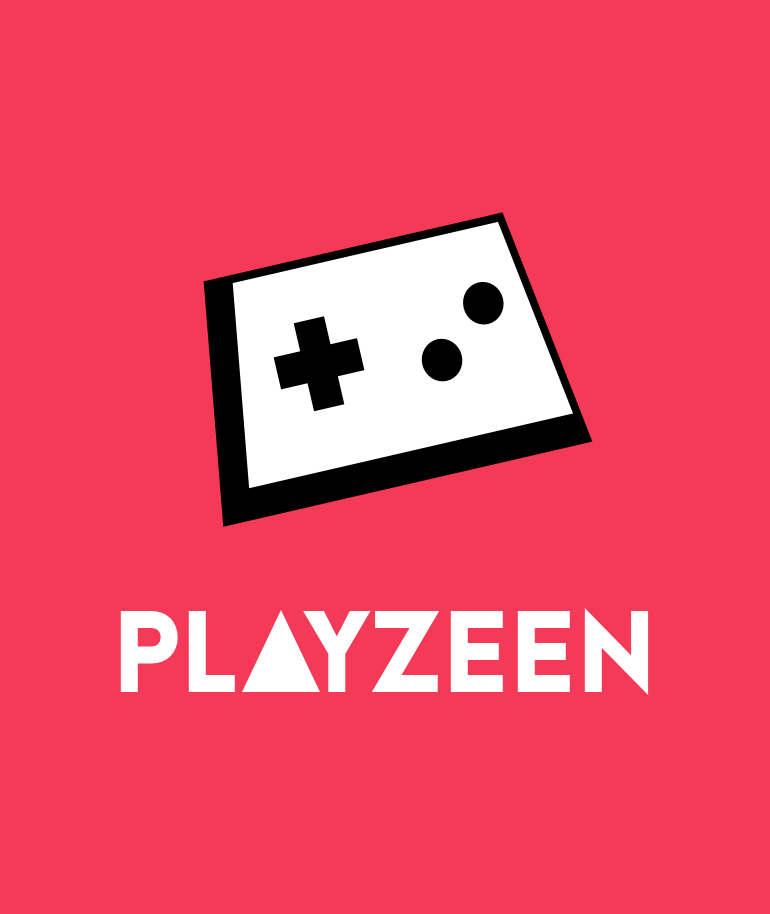If you’re unfamiliar with the Super Monkey Ball franchise, the idea is simple. You control a monkey in a ball and must navigate some sort of maze/obstacle course to reach the goal.
If you are familiar with the series, then you know that the cute, brightly colored exterior is a ploy that hides the medieval torture devices within.
Growing up, we had Super Monkey Ball Deluxe for the original Xbox, which was a combination of the first two entries with some extra levels sprinkled on top. For a kid’s game, none of my siblings or I were able to even get close to beating every level. After practicing levels repeatedly, I was finally able to beat story mode, but only by avoiding all the harder levels and barely squeaking by the easiest options of each world. There’s also the normal game mode where you must beat each stage one after the other with limited lives, and of course we weren’t able to conquer the easiest map pack.
Despite this, Super Monkey Ball Deluxe solidified itself as one of our favorite childhood games. The stages were very difficult, but bite-sized enough that they felt possible. Most of the stages had a timer of one minute, with some being thirty seconds, and getting that lucky run to beat a particularly challenging stage led to a rush of relief and pride. So, years later, I saw Super Monkey Ball: Banana Blitz and picked it up, hoping for even a fraction of the good times of its predecessor.

I stopped playing after the second play session. All the fun and challenge of the original games were sucked out. The level designs were bland, almost every edge that you could potentially fall off was walled in, and in one of the most egregious game design decisions I’ve ever seen in all my years; they added a jump button. I know, only blood can answer for the crimes that have taken place.
To give a bit more context, the original SMB games only had four buttons. Well, more realistically, one joystick. You could move in any combination of forward, back, left, and right. That was it. No other controls were needed, and simplicity helped make the games so addictive. The levels were designed with this in mind, and part of the charm of the series was the learning curve of mastering the momentum and fine motor skills needed to get across a particularly challenging tightrope or even finding a shortcut to take you right to the goal.
The jump button took all of this and threw it out the window. Maybe the levels could’ve been saved if the designers remembered that the player could use it, but almost every level had a huge skip that took you close to the goal by simply jumping over a wall. There was no satisfaction of realizing you could clip an edge to make it over a small gap. You just pressed A and got to the end. Even stages where the jump button wasn’t very useful weren’t very creative. Several long, meandering paths that were designed to maybe make you think you weren’t going to make it, only for you to remember that this was a game designed for literal babies and of course you still made it to the end with several seconds to spare. I hope you find wandering around long curves for a full minute fun, because some of the level timers were doubled. Now, you can spend up to two minutes lazily taking the corners of some uninspired map with none of the charm or difficulty of the original.

Now imagine my feelings as I sat there opening a few birthday gifts from friends and I opened Super Monkey Ball: Banana Rumble. Now, around this time, I had gone back and visited Super Monkey Ball Deluxe. My friends had listened to me talk about how I finally managed to beat every single level, including the hidden Master and Master Extra stages, and upon seeing the decent reviews for the latest SMB game, got it for me. I was officially a hardened veteran of this colorful children’s franchise with a distrust for anything new, so I wasn’t sure what to think.
In a small, but hopeful, sign that maybe things were looking better, Banana Rumble supports local multiplayer. So just like the days of playing SMB with my siblings, my friends and I booted up the game and sat around. We made our way to the main game mode and started, but then it happened.
Thankfully, the jump button was nowhere to be seen, but that didn’t mean we were free from gimmicks. Naturally, kids these days can’t just have a simple joystick as the only control. They need something else to do, so the developers added a charged boost. Basically, you press and hold the B button to start charging, and upon release, your character gets launched in whichever direction you’re pointing. The longer you hold, the more powerful the launch. That’s better than the jump button, but still. Managing momentum was a large part of the satisfying learning curve of the original games, and if you could just hold down a button and go flying, I was worried about the gimmick taking over stages and making a large portion of the levels incredibly simple.

Once we got out of the first couple of worlds, I noticed something that would happen occasionally. Not too often, but I was wondering if maybe I had encountered a bug or glitch. It was very strange; Even Banana Blitz, for all its flaws, was a polished game. Surely, a patch was on the way; games these days are unfinished and need more time after release to work out all the basic problems after all. Then, it happened again:
I fell off the stage.
There were no walls to prevent me from falling out of bounds. I saw a small gap and started wondering if I could carry enough momentum coming off the hill to bounce over it. Maybe a quick boost could get me to the end faster, but not on this level. This one had narrow lines that would make using a charge incredibly reckless. I felt it. I was thinking.
Now, I did start enjoying the game and getting that original feel of a challenging obstacle course, but it wasn’t perfect. One of the aspects even my friends were complaining about was the physics. Not the game physics, but the characters’. Turning was sluggish, slowing down took a long time, and moving around felt a bit clunky. The base game was there, but rolling around felt off, especially coming from the original games. Thankfully, there was a solution. Banana Rumble offers a large cast of characters to choose from, each with their own stat lines. After trying out a few options, I settled on Doctor. It wasn’t an exact match, but close enough to feel a lot better. I would like to play some of the other characters, but since they have different physics, it’s not worth it.

Unfortunately, another issue I have is with the charge gimmick. Although I mentioned previously that the boost isn’t viable on every stage, it’s the best option on a lot of them. Granted, the level designers remembered that the game’s gimmick exists this time, so it doesn’t feel as cheap as the jump button did, but there’s still an element of holding down B until you can release and get to the goal. I would prefer it if the boost wasn’t there, but I admit that there are several levels that make great use of the mechanic.
As far as the negatives go, that’s really all I have for glaring issues. I know I’ve been calling back to the original games in this series a lot in this review, and that’s because they really are the gold standard. The Super Monkey Ball series has been plagued for decades with games that don’t live up to what they once were. From the weird notion that the games must be insanely easy, to the developers not trusting the tried-and-true formula that worked so well, the franchise seemed to drop off. However, I’m not the only one that remembers how good the originals were. The developers themselves seemed to take direct inspiration, including bringing back some of the original level designers of the first games. Sure, Banana Rumble is still easier overall, but it’s hard to complain when the levels really do scratch that Monkey Ball itch.
Speaking of the levels, they are fun. Super Monkey Ball has a knack for stages that seem simple on the surface, only for you to realize there’s a bit more going on. Most of the levels would slot right into the original games and no one would bat an eye. That being said, it’s also interesting to take note of the differences in directions. The original games weren’t afraid to test you on your balancing skills. Impossibly narrow beams were to be expected, even on maps in the beginner category. Here, it’s very rare to come across that sort of obstacle. Instead, the emphasis seems to be placed more on puzzles and pathfinding. The challenge comes from learning how the level works, not necessarily how challenging it is to get to the goal. It’s fun to get through and piece together, but no individual stage took me more than ten minutes to get past. That is, until I got to the DLC levels.

These maps were introduced after the initial release as a free expansion, and I’m happy they were. As of writing this article, I’m still working my way through them, and holy bananas, they are hard. Some of these levels are on par with the original hidden master stages in terms of difficulty. Unfortunately, I’m not a fan of the way the level designers made some of the courses harder. It seems the main idea was to put a bunch of bumpers right where you wanted to go. Sure, that makes the level harder, but some of them are right after jumps on an uneven surface, so you don’t exactly have much control over how you bounce around. To me, it’s kind of the same idea as someone randomly coming over and throwing your Switch out the window. Strictly speaking, that would make levels more difficult to complete. Realistically, I’m enjoying some of the last few levels far less than the others. Overall, I’m having a good time with the extra difficulty, but not every stage is designed well.
There is also one more thing that will bump up the difficulty quite a bit for the completionists out there, and it’s a lot better. If you’re looking for a bit more to do, there are optional goals for each of the stages. There’s a time goal, a banana collection goal, and a golden banana that is placed in a tricky spot on each level. I’ve gone back to some of the earlier levels to try these out, and some of them are proving to be a good challenge. It’s a fun addition not only thinking about getting to the goal, but also keeping an eye out for bunches of bananas to collect the most amount before time runs out. Not to mention the moments when you think you’ve outsmarted the devs, only to see the golden banana there and realize that you were supposed to go here all along. There’s now a reason to go back to every stage besides just doing them to move on to the harder ones, and it’s a great addition.
Outside of the stages, the game is also great. Every level runs at a perfect 60 frames per second, which is extremely important in these types of games. The worlds the maps are in are colorful, fun, and vibrant. I also like the wide cast of characters, even if the non-monkey animals are a little weird to me. There are quite a few game modes available, and the mini games are back. I admit I haven’t played them yet as I’m a cynical adult who doesn’t have time for party games, but it’s nice to daydream about having enough friends to play them with.

Overall, I’m very happy with Super Monkey Ball: Banana Rumble, even if I don’t think it quite reaches the heights of the original games. The level designs could’ve been a bit more challenging outside of placing a bunch of bumpers, I could do without the gimmicky charge mechanic, and having the characters get different stats means I feel like I’m locked into my one monkey. That being said, the game sure does come close. Everything runs super smoothly, the environments and characters are fun, and most of the levels really do capture that old-school Super Monkey Ball feel.
Now please never put a jump button in these games again.





